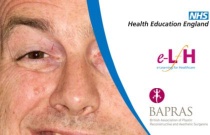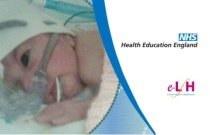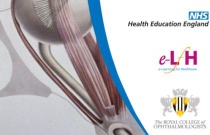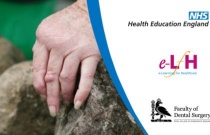The Difference Between Leadership And Management
Debbie Reed
This session provides an introduction to leadership and management and how this links to everyday dental practice.
Identification of digit sucking and other habits in the young patient
Fiona Dyer
This session informs you of the aetiology of sucking habits and the factors that influence the prevalence of sucking habits. It also describes the potential effects of a persistent habit.
Detrimental effects of enforced tooth loss
Andrew Flett, and Jonathan Sandler
This session will discuss the identification of the signs of unavoidable tooth loss in the developing dentition. It will cover assessment of the developing dentition, when tooth loss is inevitable and how to plan tooth loss to minimise the detrimental effects.
Anxiety Disorders
Rob Cleaver, Oliver Edge and Lauren Fitzmaurice
This session will help foundation doctors to recognise, assess and manage anxiety disorders in various clinical settings. UKFP Curriculum 2021 This elearning session covers some of the behaviours in: • FPC1: Clinical assessment: assess patient needs in a variety of clinical settings including acute, non-acute and commun....
Management of the Eye and Eyelids in Facial Palsy
Mira Deshmukh and Adriaan Grobbelaar
This session will describe the consequences of facial palsy on the eye and eyelids. Later, it will explore the role of surgery in their correction, identify the techniques that are used and discuss the advantages and disadvantages of each technique.
Occupational Therapy Practice in Neonatal Services
Deanna Gibbs, Amanda Clifford and Sally Payne
The session is an introduction to occupational therapy practice in neonatal services, including occupational therapy assessment and care planning, intervention approaches and preparing infants and families for discharge from neonatal care. Information and activities in this session will help you understand the occupational th....
Eye Movements 2: Anatomy and Physiology of Eye Movements
Nadia Northway
This session will demonstrate the concept of saccades, pursuit, vergence eye movements.
Rheumatoid Arthritis, SLE and Sjoegren’s Syndrome
Lucy Westcott
This session will describe rheumatoid arthritis (RA), systemic lupus erythaematosus (SLE) and Sjögren’s syndrome. It will also identify the medications used for each condition and consider the impact of each condition on dental care.
Introducing the Rehab ABC, Clinical Documentation Framework
Andrew Murray
Rehabilitation nursing lacks a clear, structured approach to documenting and communicating the vital work nurses do and their contribution to outcomes. Without a shared framework, nursing contributions to functional improvement, patient empowerment, and goal setting can be undervalued or overlooked within multidisciplinary teams....
Smoking Cessation: Snuffing Out the Habit
Donn Kropp, RN, BSN
2.00 Hours
Isn’t it interesting how, within the span of forty years, cigarettes have gone from being considered a fairly harmless habit to having a reputation as being one of the most harmful things a person can inflict on their body? By now almost every American has heard the message through a megaphone that smoking is unequivocally bad a....
The Generalist's Guide: Approaches to the Care of the Adolescent Patient
Nirupama K. DeSilva (MD), Elizabeth Miller (MD, PhD), and Nichole Tyson (MD)
7.00 Hours
The Generalist’s Guide: Approaches to the Care of the Adolescent Patient eModule, developed in collaboration with the North American Society for Pediatric and Adolescent Gynecology, reviews techniques to promote an optimal adolescent–provider visit, and effective techniques to obtain a confidential reproductive health history....
Tackling Obesity in Patients
Myriam Ferzli (MD), Ellen Landsberger (MD, MS), Juliet Mushi (MD), and Karin Ofir (MS, RD, CDN)
7.00 Hours
By the end of this lesson, the learner should be able to: Define obesity, summarize the diagnosis and treatment, explain professional primary care best practice recommendations, and identify accurate clinician reimbursement for obesity codes at his or her practice. The Generalist's Guide: Pediatric and Adolescent Gynecologic Eme....
Strategic Portfolio Management: Governing the Ungoverned
Effie Economopoulos
1.00 Hours
As demand continues to increase across the enterprise, the importance of project evaluation and prioritization becomes mandatory across the organization. We have worked with executive leadership to build an enterprise foundation that encompasses project appraisal and prioritization along with strategic portfolio management.
Tobacco, Nicotine, and E-Cigarettes
Industry Specialist
2.00 Hours
As tobacco use is the leading preventable cause of mortality in the United States, differential rates of smoking and use of other tobacco products is a significant contributor to health disparities among some of the most vulnerable people in our society. This CEU course examines the demographics of those who use nicotine produc....
Ticker Ticking - Webinar
Debbie Brouwer-Maier
Understanding and decreasing cardiac complications related to renal disease
The Aging Process and Impact on the Swallow
Denise Dougherty, SLP
5.00 Hours
Aging impacts all the systems in the body including the respiratory system, sensory system, gastrointestinal system, endocrine system and muscular system. This course will discuss the physiological changes that occur in the body with aging and how these changes impact our swallow, nutrition and diet selection and create challeng....
Treating and Managing Dysphagia with Dementia I
Peter Johnson
0.25 Hours
Treating and Managing Dysphagia with Dementia is a two part series for physical therapists, occupational therapists and speech-language pathologists. Each part may be taken independently. This series focuses on the variables associated with cognitively impaired patients, dysphagia instruction and memory functions necessary for l....
The Role Of Calculus In Disease
Noor Al-Mansouri
This session will discuss the correlation between calculus and gingivitis.
Treatment of Ectopic Canine, Premolar and Supernumerary Teeth
Tara Renton
0.50 Hours
This session will address the treatment of unerupted ectopic and supernumerary teeth, excluding molars.
Treatment of Benign Soft Tissue Lesions of the Oral Cavity
Maria Devine, Tara Renton
0.50 Hours
This session describes the principles of management of benign oral soft tissue lesions and the various surgical and non-surgical techniques. Advice is given on which lesions can be managed by the appropriately trained general dental practitioner and which should be referred to hospital.
Substance Abuse Counselor Competencies (TAP 21 Updated)
Elliott Vanskike, Ph.D., et al.
6.00 Hours
Addiction professionals work in a broad variety of disciplines but share an understanding of the addictive process that goes beyond the narrow confines of any one specialty. This CEU course addresses clincial evaluation, treatment planning, referrals, service coordination, counseling, documentation and professional and ethical....























